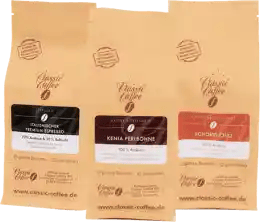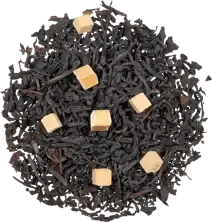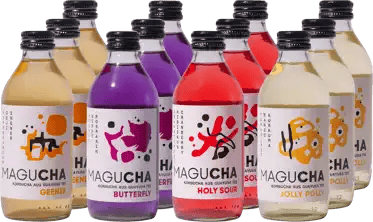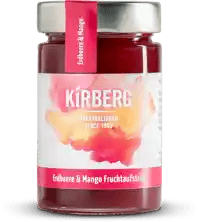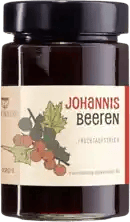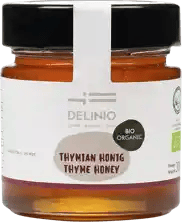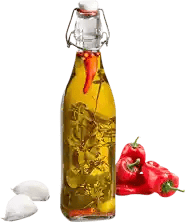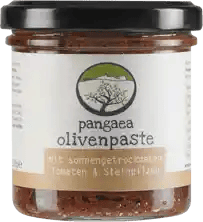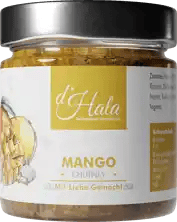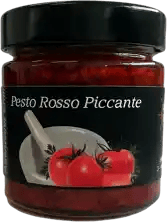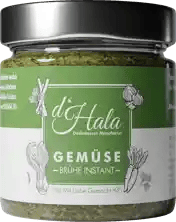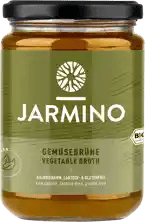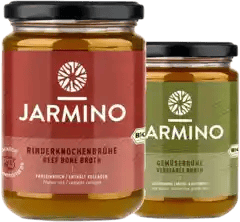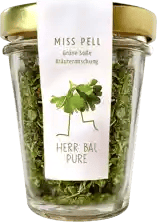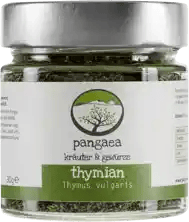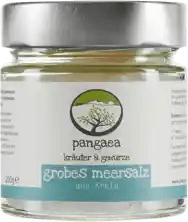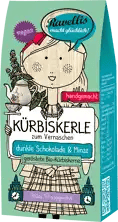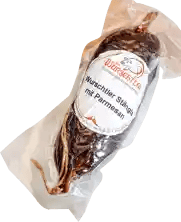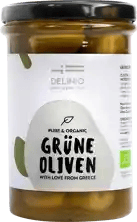Quality instead of quantity!
6,000 independent products
No mainstream
6.000 independent products
What is kimchi? Korea's fermented vegetables
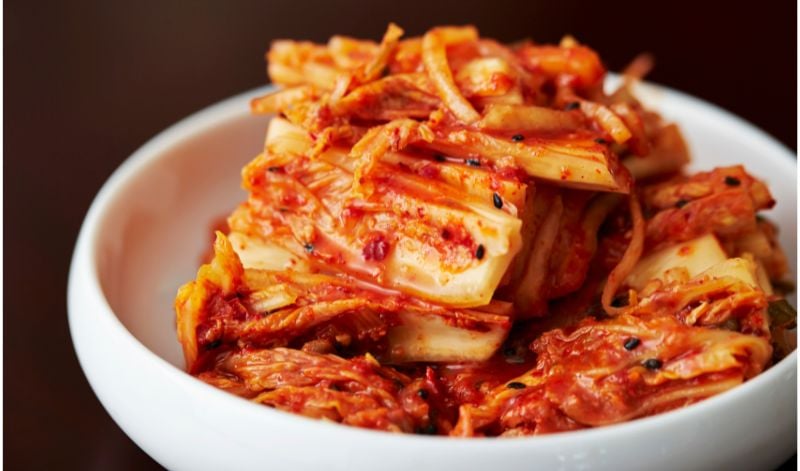
The most important facts summarized for you:
- Kimchi is a traditional dish from Korea
- Kimchi is made by fermenting various vegetables, traditionally cabbage, with chili paste and salt
- There is no official recipe for kimchi - every family has their own
- Making kimchi, called kimjang, is an important part of Korean culture - and a UNESCO World Heritage Site since 2013
Kimchi is a fascinating Korean dish that goes far beyond simple fermented vegetables. This traditional delicacy embodies the essence of Korean cuisine and its unique combination of flavors and health benefits make it a true culinary gem. With its deep roots in Korean culture, kimchi is not just a simple fermented vegetable, but a symbol of community, tradition and well-being. Immerse yourself in the world of kimchi with us!
What is kimchi?
Kimchi is a traditional Korean dish made from fermented vegetables. Not only is it delicious, but thanks to fermentation it is also healthy and full of probiotic bacteria that can be good for digestion. The production of kimchi can vary depending on the region and taste, but classic ingredients include cabbage, radish, garlic, ginger and chili. These ingredients are fermented together to create the characteristic flavor of kimchi. But kimchi is not just a simple dish - it is a cultural icon in Korea and is often served with various meals.
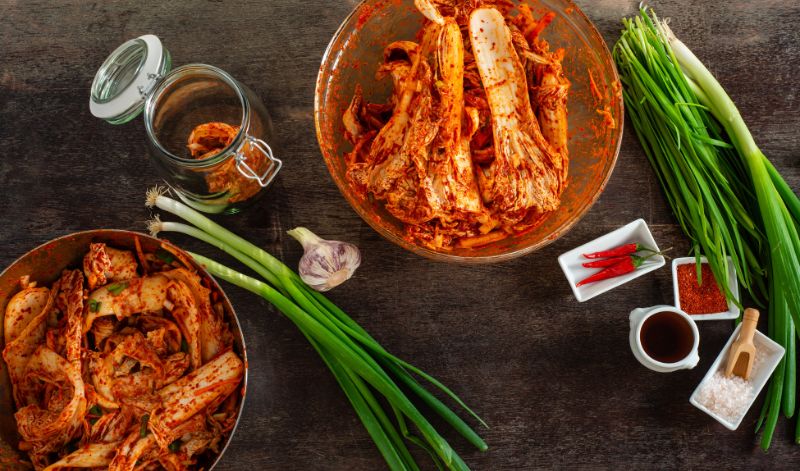
Kimchi is a traditional dish from Korea in which various vegetables - usually cabbage - are fermented with chili paste and salt.
The name "kimchi" translates as "salted vegetables" and alludes to the essential ingredient that is actually necessary for any fermentation: salt. Salt draws water and carbohydrates out of the vegetables and thus provides food for the lactic acid bacteria they contain - the drivers of fermentation. Salt-driven fermentation gives kimchi its distinctive flavor.
Kimchi - history & cultural significance in Korea
The history of kimchi is as fascinating as it is ancient. Its roots go back to the time of the Three Kingdoms of Korea, which lasted from 57 BC to 668 AD. However, it is not known exactly when kimchi made a name for itself during this era. It also remains a mystery as to why Chinese cabbage became a fundamental component of this traditional dish.
What is certain, however, is that over the centuries, kimchi has developed into an indispensable symbol of Korean culture and identity that goes far beyond its role as a side dish. Even the preparation of kimchi symbolizes tradition and unity: traditionally, the members of a family gather once a year to make kimchi together. The families usually come together between October and November, when the winter season begins and the harvests need to be preserved.
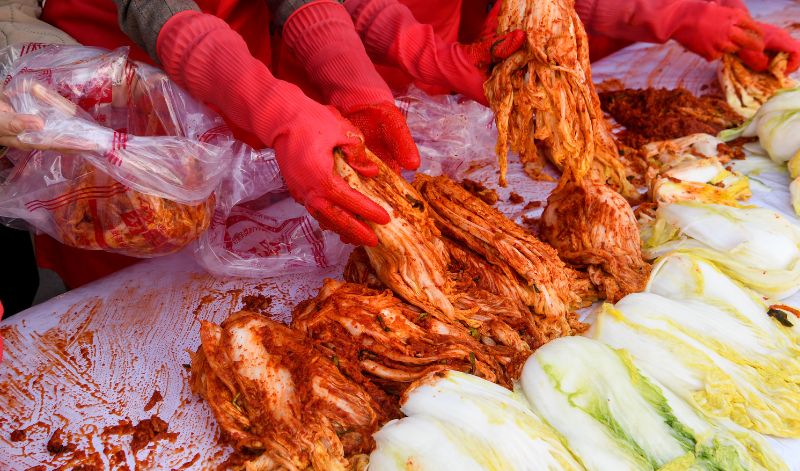
Kimjang, the traditional preparation of kimchi as a family, has been a UNESCO World Heritage Site since 2013
The traditional joint preparation of kimchi even has a name: Kimjang or Gimjang. Since December 2013, kimjang has even been a UNESCO World Heritage Site. Kimchi is therefore not just a metaphor for the deep connection Koreans have with their past and their roots.
The health benefits of kimchi for body and mind
Kimchi can offer a variety of health benefits. Due to the fermentation process, kimchi is rich in probiotics, which can promote healthy gut flora and thus strengthen the immune system. In addition, eating fermented foods such as kimchi can have a positive effect on digestion as they are rich in beneficial enzymes that can aid digestion. With its unique combination of flavor and health benefits, kimchi can be an enriching addition to a balanced diet.
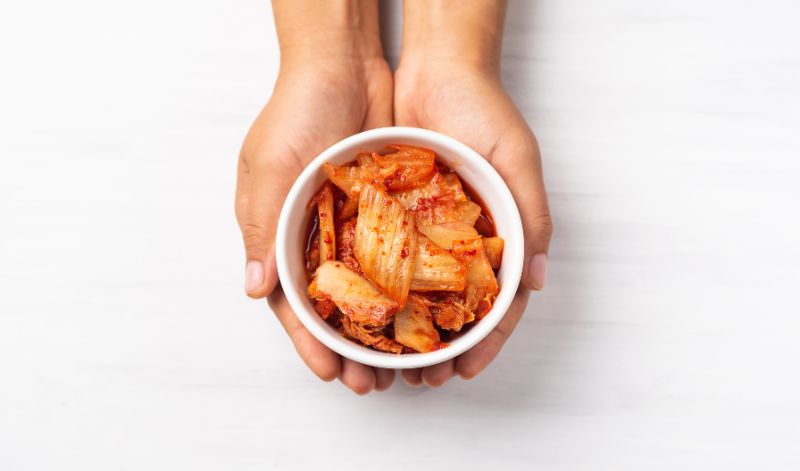
Kimchi can have a positive effect on your gut health and immune system thanks to the enzymes & probiotics it contains.
Kimchi - different types
There are a variety of different types of kimchi, which differ in terms of ingredients, taste and production process. The most common varieties include
- Baechu kimchi: This is the best known and most widespread form of kimchi. It is made from Chinese cabbage, radish, garlic, ginger and a special chili paste.
- Kkakdugi kimchi: This is diced radish pickled with a mixture of chili, garlic, ginger and fish sauce. The taste is often stronger and spicier than baechu kimchi.
- Oi Sobagi Kimchi: This variant uses green cucumbers as a base, which are pickled with a paste of chili, garlic, ginger and fish sauce. The taste is slightly sour and refreshing.
- Jeorim kimchi: This uses young leaves and stems of Chinese cabbage, which are marinated in fish sauce, chili and spices. Jeorim kimchi has a more intense, more fermented taste.
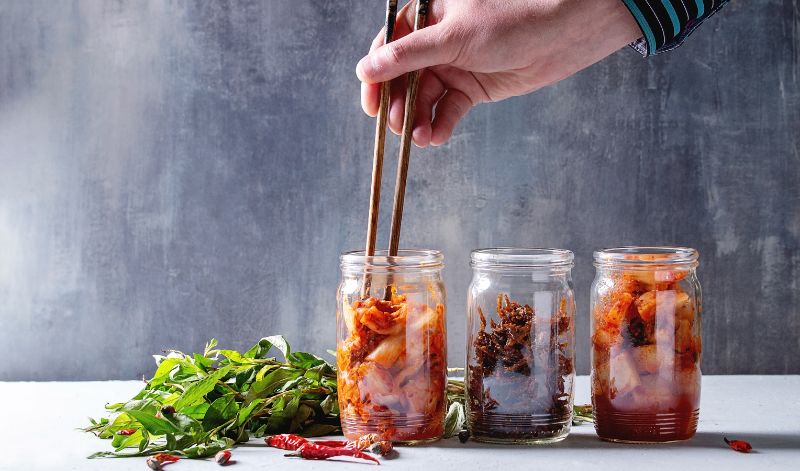
There are different types of kimchi, which are prepared with different vegetables.
The different types of kimchi therefore differ mainly in the types of vegetables used, the spice mixtures and the fermentation processes, resulting in characteristic flavor profiles. This makes it possible to adapt kimchi to individual preferences and dishes. Basically, there is nothing that does not exist with kimchi. A wide variety of vegetables are suitable for preparing kimchi - whether it's fennel, kohlrabi or even chard.
Use of kimchi
Kimchi is used in many traditional dishes. As a side dish, ingredient or stand-alone dish, kimchi enriches meals with its unique flavor profile of spiciness, acidity and umami. Here are a few examples of how to use kimchi:
- Kimchi Bokkeumbap: classic example of a traditional Korean dish. Kimchi bokkeumbap is a fried rice pan with kimchi, vegetables and often meat or seafood. It is usually served with a fried egg.
- Kimchi Jjigae: a delicious and spicy kimchi stew soup. The kimchi gives the soup a wonderful spiciness, which is perfectly balanced by the creamy consistency and other ingredients such as tofu, pork or seafood. However, meat and seafood do not belong in the same pot - you can either find a version with meat or with seafood.
- Kimbap: Korean rice rolls. They consist of steam-cooked rice filled with a variety of tasty ingredients such as vegetables, meat or seafood and then carefully rolled up in nori seaweed leaves. The rolls are often prepared in social gatherings, which strengthens cohesion and solidarity within the group. Kimbap are also perfect for on the go - whether as a snack between meals or as a side dish for a picnic.
- Kimchijeon: also known as kimchi pancakes, is made from a basic flour batter. This is then mixed with kimchi, a variety of fresh vegetables and often tender meat. The result is an extremely tasty and versatile stir-fry dish.
- Kimchi mandu: are traditional Korean dumplings filled with kimchi, tofu and minced pork. The composition of the fillings can vary according to taste.
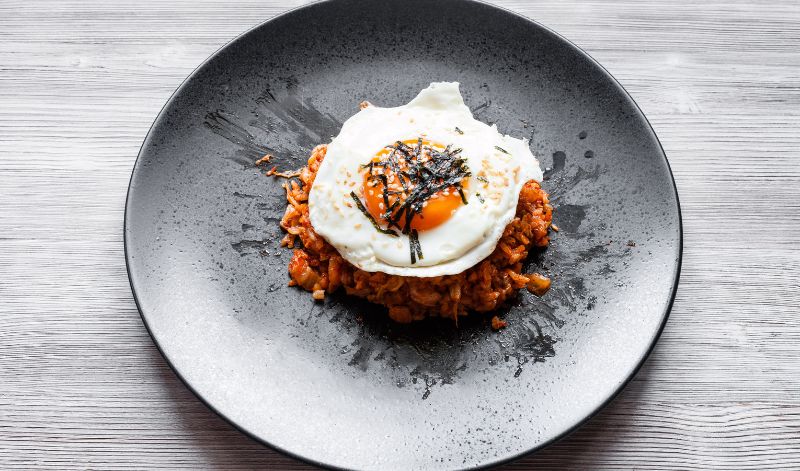
A typical dish with kimchi is kimchi bokkeumbap, a kind of rice pan that is usually served with a fried egg.
The possibilities for using kimchi in the kitchen are almost endless and range from savory main dishes to refreshing salads and snacks.
Kimchi fun facts
- Adelicacy with a cultural tradition: Kimchi is more than just a sauerkraut - it is an integral part of Korean food culture and has been prized as a healthy, fermented delicacy for centuries. The variety of flavors and ingredients is impressive and ranges from classic spicy to exotic varieties.
- Different every time: there is actually no such thing as a traditional kimchi recipe. Each family often has its own secret recipe that is passed down through the generations.
- Kimchi fridge: Many Korean households have a separate fridge for kimchi. The reason: the odors that form during the fermentation process can sometimes be quite unpleasant - and cling to the fridge and other foods.
- World cultural heritage: Kimjang, i.e. the traditional preparation of kimchi with the family, has been a UNESCO intangible world cultural heritage site since 2013.
- Buried: Traditionally, kimchi was stored in clay containers that were almost completely buried in the ground. This keeps the kimchi cool enough that it does not ferment further, but also prevents it from freezing.
Matching products to the article
Win a Hop Gin & Tonic Set!

Win a
Hop Gin & Tonic Set (1x Gin, 4x Tonic)
worth 36€

It's never been so easy. Simply register now & join in!
Erfolg!
Klasse, jetzt musst du nur noch deine Anmeldung bestätigen. Dazu hast du eine E-Mail im Postfach.
Recent articles
-
30 AprLemon juice - the all-rounder for the kitchen, bar & co.
-
25 AprWhat is kimchi? Korea's fermented vegetables
-
23 AprMoon Spirits Premium Dry Gin - a gin like moonlight
-
18 Apr"Our sausage contains Franconia" - A portrait of the Wurschtler
-
13 AprWhat is the difference between coffee and espresso?
-
11 AprWhat is mascarpone? Info, alternatives & more
-
09 Apr"Trees instead of fences" - a portrait of Wildlieb
-
04 AprTruffles - interesting facts about the noble delicacy
-
26 MarLow carb - All about a low-calorie diet
Brilliant!

Bitte bestätige deine Anmeldung noch eben - du hast eine Bestätigungsmail von uns. Klicke darin auf den Link. Danach bekommst du deinen Rabattgutschein.




































































